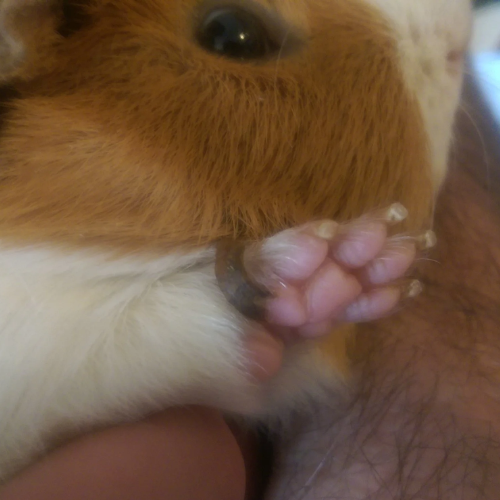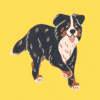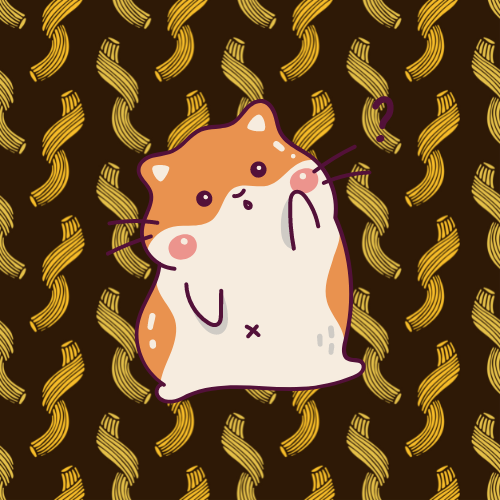Guinea pig foot spur is a common sight for all guinea pig owners. At some point in their life, guinea pigs suffer from foot spurs. These foot spurs can compromise their daily activities.

We are here to guide you all about their foot spur for guinea pig lovers.
What’s a Guinea Pig Foot Spur?
For new guinea pig owners, you must be wondering what exactly is foot spur, what are its symptoms, what causes, what treatment, and much more.
Guinea pig foot spurs are flaps of the tougher, rough skin which protrude from the front feet. They are the tougher outgrowths having a dry, crusty surface that protrudes similar to fingernails from the undersurface of the guinea pig feet.
Guinea Pig Foot Spur Symptoms:
Guinea pig foot spurs are usually harmless. However, if they get caught over the rough surfaces of the cage wire or the straw bedding, this can cause wear and tear of the lesion.
Once the spur is torn, this might cause cuts and, ultimately, infections. If the infection is not treated on time, the spurs might get very painful, leading to irritability and discomfort for the guinea pigs.
Main Causes of Foot Spur in Guinea Pigs and What Should You Do?
Guinea pig foot spurs occur because of specific reasons. Some of these causes include genetic or hereditary transmission of the guinea pig foot spur.

Apart from it, the causes of foot spurs include lack of care by the owner.
Another common reason for foot spurs includes lack of activity and exercise. If the cages are not cleaned properly, this can cause infections in the guinea pig’s feet.
Remember, the guinea pig foot spurs do not occur because of hay or bedding within the cage.
Make sure to keep the cages clean and trim the excess spurs of the feet of the guinea pig at all times. Apart from it, if still there are concerns, visit the vet.
Finding guinea pig foot spur might be strange for you as a new owner. There is nothing to worry about as they are harmless. You can easily remove them.
- Agouti Guinea Pigs
- Can Guinea Pigs Eat Newspaper?
- Hay Mites On Guinea Pigs – Detecting And Treating A Mite Infection
- Dandruff on Guinea Pigs: What Causes It and How to Treat It
- What Temperature is Too Hot for Guinea Pigs in Celsius?
How to Get Rid of Guinea Pig Spurs?
For removing the guinea pig spurs, make sure to use clippers or nail scissors. Make sure to be gentle when you trim the guinea pig spurs. It’s the same as removing a long toenail.
Are you afraid of hurting your guinea pig or afraid that you might go wrong? Then you should visit the vet and take help from them to remove the foot spur.
Should You Remove a Guinea Pig Foot Spur?
There is no need to remove the guinea pig foot spurs as usually, they are not harmful. They fall off themselves. However, if the spurs are growing long and curly, leading to severe side effects like walking, it’s best to get rid of them.
If the guinea pig foot spurs are present for a longer time, they might cause danger leading to tearing. The guinea pigs might feel uncomfortable and have walking issues. Initially, spurs don’t cause problems for the guinea pigs but when they are unmanageable, take them off.
How to Prevent Guinea Pig Foot Spurs?
The exact reason why the foot spurs occur is not known. The cleanliness and bedding don’t correlate with each other. Some pigs don’t develop spurs, while others do.

To prevent your pigs from developing serious spurs, make sure to check the paws and trim the claws regularly. Keep a check on the guinea pig’s behavior, like how it’s walking, licking, biting its foot, or whether it is crying.
FAQs
Do Spurs Hurt Guinea Pigs?
Usually, foot spurs don’t cause an issue, and you can easily snip them off. However, if they grow strong and lead to pain and infections, it hurts the guinea pig.
Why Do Guinea Pigs Get Spurs?
Spurs don’t develop related to any flooring or the bedding used. Some pigs grow spurs while others don’t. It seems like genetics, husbandry, and activity level can lead to the development of spurs.
What Does Bumblefoot Look Like on a Guinea Pig?
Bumblefoot symptoms include calluses over the heel looking painful and red during the initial stages. Apart from it, hair loss and less activity are experienced.
During the inflammatory stage, bumblefoot is easier to spot. You can see scabbing or peeling skin over the infected area. There are painful, red calluses over the heel; bleeding with less activity.
In the infected stage, the guinea pig cannot walk, stops drinking or eating, and cries with blisters and ulcers on the feet. You can see wound discharge with scabbing over the infected part.
In the last stage, where tissue and bone infection occur, a foul smell is there; paralysis with intense pain.
How Do You Fix Bumblefoot in Guinea Pigs?
It’s not easy to treat bumblefoot in guinea pigs. If you detect it earlier, then there are certain things you can do to get rid of them.
In the initial stage, you can treat bumblefoot at home. Soak that specific area in a warm water solution with Epsom salts. Supervise the guinea pig at all times as they might accidentally get salt in their eyes. Make sure to perform this twice or thrice daily.
Once you soak the feet, apply ointment to reduce swelling and prevent the feet from infections.
If the condition is severe, make sure to get in touch with an experienced vet. The vet makes sure to clean the sores, trim down the guinea pig nails and perform lab tests if the infection is severe.
What Do You Do When Your Guinea Pig’s Foot Hurts?
Switch the guinea pig to smooth bedding, improve sanitation and improve the lifestyle. Ensure to maintain dry flooring in a cage and prevent your guinea pig’s foot from wear and tear as they are prone to infections. You can also enhance the intake of Vitamin C in your guinea pig’s diet if advised by a vet.
If the condition is worse, your vet might clip the nails and make sure to get rid of all spurs. The vet might also prescribe antibiotics and anti-inflammatory drugs to help guinea pigs from pain.
Conclusion:
There you have it. Now you can treat the foot spur easily and calm your pig. Check the guinea pig’s foot spur regularly to avoid discomfort and pain in the later stages.

Doctor of Veterinary Medicine (D.V.M.) at Nation Taiwan University,Master of Science (M.S.) in Biomedical Engineering at National Taiwan University of Science and Technology




